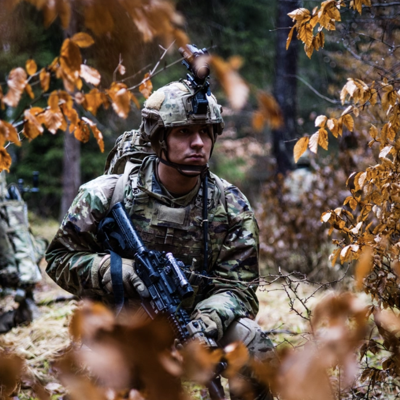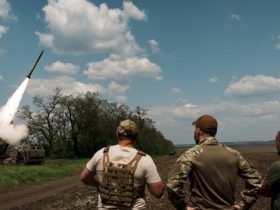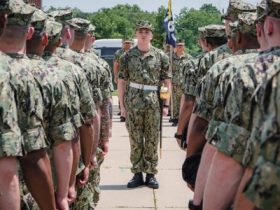Army units stationed in Europe, from platoons to headquarters, are learning from Ukraine’s battlefield as the service embarks on the second phase of an equipping effort, officials said Wednesday.
A “small element” of soldiers rotates in and out of the war-torn country to collect lessons, said Gen. Darryl Williams, commander of U.S. Army Europe and Africa, speaking at a media roundtable at the Association of the United States Army’s annual Washington meeting.
Those soldiers fall under Lt. Gen. Curtis Buzzard, who in August was appointed head of the allied effort that coordinates aid to Ukraine. He previously served as the commander of a major U.S. Army doctrine center, the Maneuver Center of Excellence.
“He’s able to get insights on the environment in terms of the number of drones that they’re flying,” Williams said. “Learning is taking place as we speak, at the tactical level, the operational level, to inform the strategic level.”
The team that rotates through Ukraine is limited to working inside the U.S. embassy and does not provide advice to the Ukrainian government, a U.S. Army Europe spokesperson said.
The U.S. has also adapted its own training facilities at Grafenwöhr, Germany, to better mimic the tactical environment for the Ukrainian units who come there for training, Williams said.
“It looks like the conditions in Ukraine,” he said.
The lessons brought back by that team are shaping how the Army approaches its “Transformation-in-Contact” equipping strategy. Under the 8-month-old effort, the Army is flooding certain units with new drones, counter-drone tech, and communications gear that is not necessarily part of any program of record—the service’s typical method of buying new equipment.
One light infantry unit that’s part of the initial Transformation in Contact cohort, the 10th Mountain Division’s 3rd Brigade, is drawing directly from Ukraine for its new “Strike” Company, said Lt. Gen. Charles Costanza, commander of Army V Corps.
That unit, which links drone operators to mortars, artillery, and loitering munitions, is “coming straight out of watching what’s going on in Ukraine,” he said.
Williams said the Europe-based 2nd Cavalry Regiment, and U.S.-based 1st Armored Brigade Combat Team of the 3rd Infantry Division are among the four brigades slated for “Transformation-in-Contact 2.0,” an expansion announced by George on Tuesday.
Command Sgt. Maj. Dennis Doyle of the 2nd Cavalry Regiment said that unit is already adopting lessons from Ukraine.
“Over the last few years, based off of the fight that’s in the Ukraine, and just with us being right there with the enemy at the doorstep…we’ve been able to extract a lot of lessons learned that’s kind of drove us to kind of think about how we do agile and adaptive command and control,” Doyle said.
Russian missile strikes on Ukrainian troops have underscored the need to make command posts harder for enemy forces to find.
Even before being designated for the TiC effort, the 2nd Cavalry Regiment was working to slim down its command posts, as well as experimenting with translation software for communicating with allies.
The unit started receiving some equipment under the TiC 2.0 fielding strategy this month, Doyle said.
Not all lessons are about new tech, though, said Maj. Gen. Ron Ragin, commander of the unit responsible for helping manage aid transfers to Ukraine, the 21st Theater Sustainment Command.
Ragin said he recently asked several senior Ukrainian officers what they would have done differently before the war.
He said the Ukrainians recommended investing in ammunition production and stockpiles and in creating multiple locations for maintaining equipment. They also recommended creating hardened storage and command-and-control infrastructure.
“I’m using those lessons from our Ukrainian partners that are currently under strain and in contact to inform how I approach the priorities that Gen. Williams has given us,” Ragin said.
“So I’m working with not only the acquisition community but also with the joint material enterprise to make sure that we’re taking the lessons learned from Ukraine and applying it to how we move forward in the future,” he said.
Read the full article here








Leave a Reply